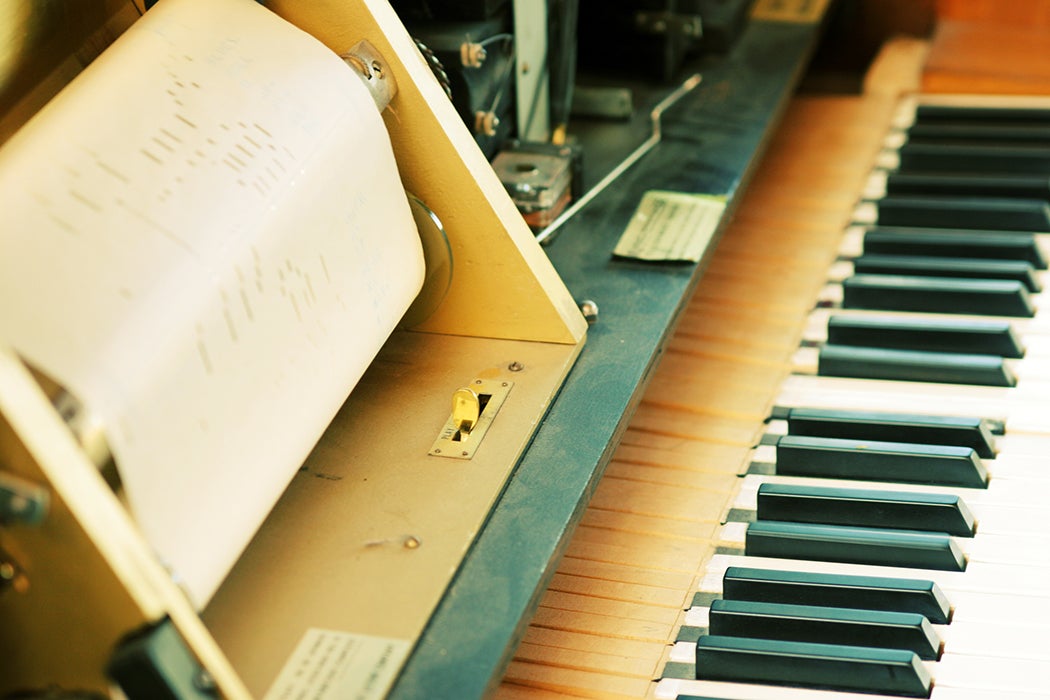A century ago, half of all American homes had a piano or player piano. These were the most expensive household items a family could purchase before the era of mass-produced automobiles. A 1922 advertisement shows player pianos costing from $300-$700, equivalent to $4,000-$9,500 today. Consequently, pianos were the “primary marker of middle-class cultural capital, the symbol of perfect domesticity and family harmony,” writes Timothy D. Taylor.
For a short while, player pianos were all the rage. In 1909, Robert Peary even took a player piano on his expedition to the North Pole. In 1919, in the Bronx, New York, the nation’s capital of conventional and player piano manufacturers, sixty-four piano factories employed more than 5,000 workers. And by 1919, player pianos—the first were gimmicks of the mid 1800s—surpassed conventional pianos in sales.
Think of the player piano as a simple analog robot. Its programing was a paper roll with perforations that activated specific keys. Player pianists could start and stop the machine and use the foot pedals to operate the bellows driving the machine; they could control the machine’s speed, and hence the tempo of the music; and, of course, they could choose the music being played. Once you had the machine, all you needed were the music rolls.
The player piano, “the first mass-produced technology that allowed music to be made by individuals with no musical training or experience,” predated the phonograph. “The Pianola solves the problem of music in the home,” touted advertisements for one of the major brands. After all, you didn’t have to know how to play to have piano music in your home. And by the mid-teens, paper music rolls “recorded” by famous musicians were the thing. “This very evening, in the quiet of your own home,” ran another ad, “you may summon for your delight such artists as” Paderewski, Casella, Rubinstein, and Madden.
A popular theory claims that people made their own music until the commodification of music represented by the phonographic record player, but Taylor argues that music was already a commodity before the phonograph. Pianos depended, after all, on of a robust sheet music industry, and player pianos were nothing without their musical instructions. The phonograph, and then radio, made music substantially less expensive and more accessible. But the idea of recorded music existed before them, in the form of these player piano paper rolls.
Weekly Digest
“Music is never simply a commodity, or, rather, it is never a commodity in a simple way,” writes Taylor. “It is made into a commodity by a variety of processes that are dependent on its social uses, its industrial production, its brokering in the broadest sense—including marketing, advertising, and other practices that are part of the infrastructure of consumer capitalist cultures.”
The stock market crash of 1929 swiftly signaled the end of the player piano’s reign. And since then, from shellac to vinyl, from 78s to 331⁄3S, from tape to digital, music has been sold in many ways since the piano and player piano ruled the parlor.







